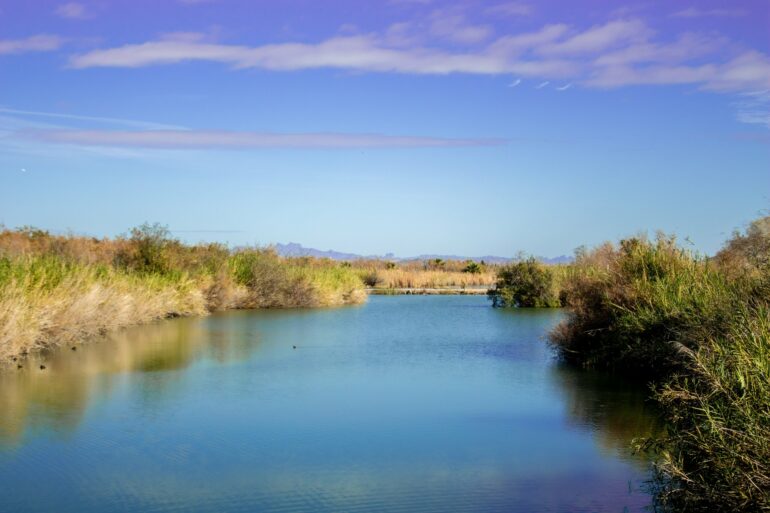Irrigation for agriculture uses more than half of the Colorado River’s total annual water flow, reports a paper published in Communications Earth & Environment. This finding is part of a new comprehensive assessment of how the Colorado River’s water is consumed—including both human usage and natural losses—and provides a more complete understanding of how the river’s water is used along its over 2,300 km (almost 1,500-mile) length.
The Colorado River flows through the southwestern United States (including the Grand Canyon) and northwestern Mexico while supplying water to more than 40 million people and more than 2 million hectares of cropland.
The river is at historically low levels due to the ongoing megadrought in the region and continued overuse of its water supply. However, despite the ecological and economic importance of the Colorado River, a complete water budget (a detailed analysis of the movement and losses of a river’s water) has not yet been calculated.
Brian Richter and colleagues calculated the water budget of the Colorado River basin based on the average annual water use and water losses between 2000 and 2019. They included all direct human uses—including irrigation, domestic use, and industrial and commercial uses—and all indirect losses, including evaporation from reservoirs and wetland vegetation.
The authors found that irrigation for agriculture was responsible for 74% of direct human usage and 52% of overall water consumption. They also found that nearly two-thirds of the water used for irrigation was used on cattle feed crops, accounting for 46% of direct human usage, or 32% of overall water consumption.
The results are the first complete water budget for the Colorado River, and include several previously unreported factors, including overall water consumption in Mexico (7% of the total), and overall water consumption in the basin of the Gila River in Arizona (9% of the total), one of the major tributaries to the Colorado River.
The authors caution that there will need to be a significant reduction in water use to avoid future shortages, and that more water will need to be left in the river to support the diverse ecosystems along its full length.
They conclude that these findings may have relevance for policymakers as six legal agreements governing the use of the Colorado River’s water are set to expire in 2026.
More information:
Brian D. Richter, New water accounting reveals why the Colorado River no longer reaches the sea, Communications Earth & Environment (2024). DOI: 10.1038/s43247-024-01291-0. www.nature.com/articles/s43247-024-01291-0
Provided by
Nature Publishing Group
Citation:
More than half of Colorado River’s water used to irrigate crops, assessment shows (2024, March 28)



